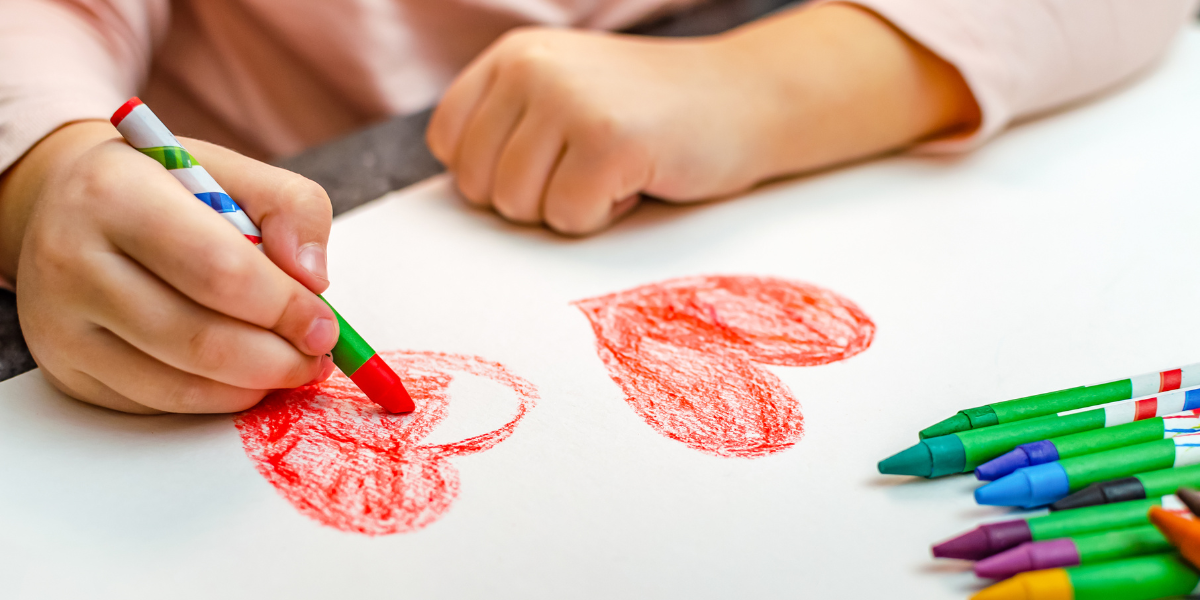Teaching the Human Heart to Young Children: Fun (and Easy to Set Up!) Activities for Preschool to Third Grade
Posted by Sara Naff on Jan 24th 2024
February is a special month for hearts, not only because it's National Heart Health Month but also because it's the month of Valentine's Day.
For preschool teachers and early childhood professionals teaching pre-kindergarten to third grade, it's a fantastic opportunity to introduce young children to the wonders of the human heart.

My team and I are sharing creative and educational activities to help young learners understand how the heart works, connecting them to the world of science in a fun and engaging way.
Where to Begin?
If you are new to teaching STEM concepts in the early childhood classroom, start by explaining the heart in simple terms.
Describe it as a small, powerful muscle in our chest that works like a pump. It sends blood around our body to keep us alive and healthy. Use comparisons that children can relate to, like saying the heart is like a little engine that keeps our bodies running.
Activity 1: Heartbeat Listening
Materials Needed:
- Stethoscope (or homemade versions using tubing and funnels)
- An open space, like where you hold circle time
Have children listen to their heartbeat. First, demonstrate how to use the stethoscope and then allow each child to listen to their heartbeat. Ask them to jump in place for a minute and listen again. They'll notice the difference, which is a great way to discuss how exercise affects the heart.
Activity 2: Heartbeat Charting
Materials Needed:
- Chart paper or craft paper
- Markers
- Stickers
After the children listen to their heartbeats, they can chart it on a large piece of paper. Use different color markers or stickers to represent resting and active heart rates. This visual representation will help them grasp the concept of a beating heart.
Activity 3: Healthy Heart Food Collage
Materials Needed:
- Magazines
- Scissors
- Glue or glue sticks
- Large paper
Discuss foods that are good for the heart (fruits, vegetables, whole grains, etc.). Have the children cut out pictures of these foods from magazines and create a collage. This activity combines art with learning about heart-healthy nutrition.
Activity 4: Heart Art
Materials Needed:
- Construction paper
- Scissors
- Crayons
- Art supplies
Encourage children to create heart-shaped crafts. They can cut out hearts, decorate them, and share them with classmates or family members. Tie this activity to Valentine's Day by discussing how giving and receiving love is also good for our hearts.
Activity 5: Heart-Healthy Exercise
Materials Needed:
- Open space
- Music
Organize a dance party or simple aerobic exercises. Explain how these activities make our hearts stronger and healthier. This can be a daily or weekly routine to emphasize the importance of regular exercise.
By using these activities, teachers can make learning about the human heart an enjoyable and memorable experience for young children. Not only do these activities align with National Heart Health Month and Valentine's Day, but they also lay the groundwork for lifelong awareness of heart health and wellness.
Remember, the key to teaching young children is to keep it simple, engaging, and interactive.
We Also Recommend
- The Texas Heart Institute has an entire Pre-K lesson plan that includes detailed instructions for activities and suggestions and free, printable worksheets.
- Be sure to take care of your own heart! Healthy childcare professionals means happy childcare professionals. Get tips on heart health from the American Heart Association.
AIR Resources & Professional Development Courses
Online Training
Learn how to teach about heart science and other STEM topics…
…and about the emotional heart, too:
- Social-Emotional Problem Solving: Making Friends
- You’re NOT My Friend! Addressing Bully Behavior and Building a Positive Classroom Community
From the AIR Blog
- Activities from the Heart: Ideas for Teaching Shapes, Colors & Seasons in February
- Having Heart: 13 Children's Books About Diversity and Inclusion
Sara Naff is an early childhood education professional who has taught in the preschool classroom as well as adult learner environments. She is Director of Operations at AIR Childcare Training Solutions.

